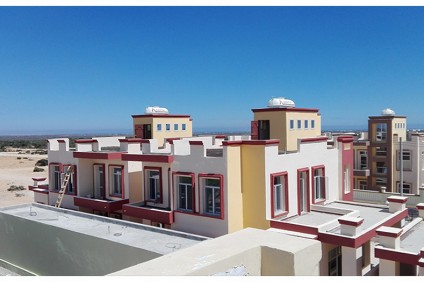An air tightness test is done to satisfy the requirements of building regulation part L1 and L2. This means that both dwellings and commercial properties require an air tightness test.
In some instances the drawings or plans of the building are sent to the tester in advance to allow them to work on the calculations before arrival. The calculations required include volume, envelope and floor area of the building. However, the tester is responsible for the accuracy of those calculations and should always check on site to ensure that the paper calculations match what has actually been built.
If the drawings have not been received in advance then on arrival they will have to measure the building onsite and the complete the calculations at the same time. This involves using either a tape measure or laser meter and taking measurements of the internal envelope of the building from which all the other calculations can be made. These calculations are an essential part of the air tightness test because without them, an air permeability result cannot be achieved.
Once the calculations are made ‘Method B’ requires that the barometric pressure together with the internal and external temperature is taken. Vents are sealed, windows are closed and the test is conducted.
Upon completion of the test, the data gathered together with the building calculations is used to calculate the air flow and air leakage rate.
The results should then be compared with the design target of the building. If the results are below the design target of the building, then the building has met its air tightness target.
The tester is sometimes able to issue a certificate right there whilst onsite but in most cases this is done the following day.
On several sites that we have tested, things sometimes don’t go according to plan and the property fails to meet its target. This is usually because the building has holes that need sealing. Usually the calking has not been done to the top and bottom of the skirting board. Other times the holes are around pipes or hidden behind cabinets and units. Once you begin to look it can be surprising the number and size of holes left by tradesman – we have even seen a 4 inch round hole where the boiler flue was drilled in the wrong place.
Article Source: http://EzineArticles.com/8987402.






comments (0)